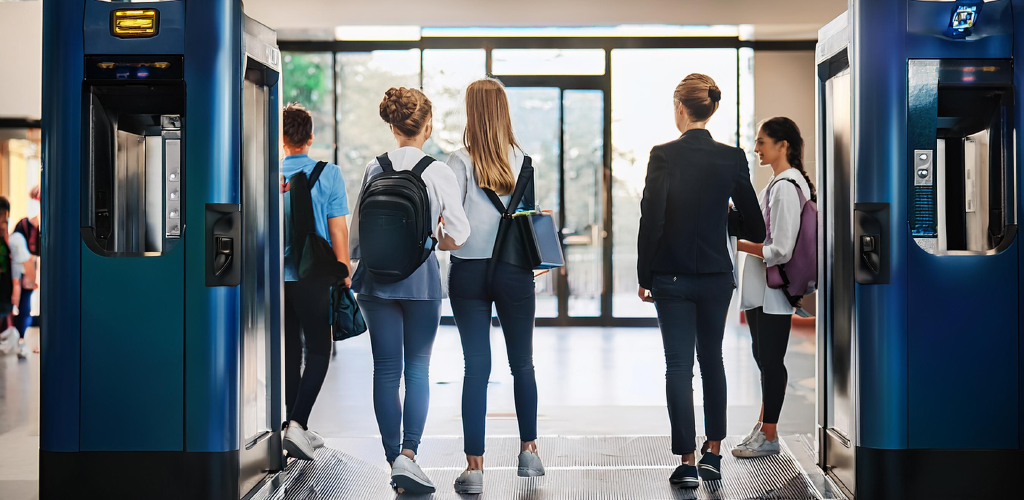Another School Year… Another Shooting
September 8, 2024

Another school year barely begins and we’re already grieving another school shooting.
The recent tragedy in Georgia contributes to two startling comparisons. First, according to the Washington Post’s School Shooting Database, there have been 417 school shootings in the past 25 years. That’s 417 shootings in 250 months (school years are roughly 10 months long), or approximately 1.7 shootings per month.[1] Secondly, we are woefully unprotected and unprepared. In Pennsylvania, we are required to conduct fire drills monthly while school is in session and allowed to substitute one (sometimes two) of those drills with a “school security drill” (aka Active Shooter).[2] In light of the Post’s stats, maybe it should be the other way around.
During a fire drill we train students to leave the building quickly and in an orderly fashion. For shooter drills we teach hide, flight or fight, and tell children when they find themselves face-to-face with a gunman to throw whatever is readily available at them. But that’s a problem since items that could be harmful when thrown are kept to a bare minimum, so students don’t use them on each other throughout the year. Left with, basically, school supplies you’d find in a backpack, students aren’t likely to deter a massacre-minded lunatic by hitting them with a couple of whiteboard erasers. We know — or at least I know — such a defense will not stop the assault. And children in line-of-site to throw something are also in line-of-site to be shot. They’ll be memorialized as heroes, but that will give little solace to their grieving families and friends.
Some have called school shootings a fact of life that can only be remedied by more armed security in schools. I am in favor of having professionally trained and armed security personnel (not teachers) patrolling my buildings. I believe they act to a significant degree as a deterrent. More importantly, they are a mature line of defense when a situation requires maturity, discipline, and controlled reserve. They were effective in minimizing casualties at Apalachee High School in Winder, GA, where reportedly school resource officers responded in six minutes to subdue the gunman and prevented further casualties. But having armed security officers in the building should be considered the second line of defense. Once the gunman is inside the building, someone (or many) will die. We have to change our approach to the problem so no one surrenders to school shootings as a fact of life. We must focus on keeping weapons out of the building.
I’m an advocate for metal detectors at the sole point of entry of every school. There should be one way into a school enabling proper screening of everyone who enters. This is standard operating procedure at courthouses and other government buildings, and anyone flying commercially has encountered Transportation Security Administration (TSA) screenings. Yes, sometimes the wait can be frustrating, but it’s an effective solution to eliminating weapons on a plane and the same technology should be used to protect our schools.
In the first quarter of 2024, the TSA screened more than 206 million passengers and intercepted 1,503 firearms for an average of 16.5 firearms per 1 million passengers. This is a slight decrease from the same period the previous year when 191 million passengers scanned resulted in 1,508 firearms intercepted for an average of 16.8 per 1 million flyers. If these numbers hold, the total projected number of firearms intercepted in 2024 (6,000) will be lower than totals in 2023 (7,000) and 2022 (6,542).[3] As a result of the industry’s screening process, the International Air Transport Association (IATA) reports most hijackings do not involve firearms or explosives but rely on threats or less-lethal weapons such as knives, box cutters, or similar items. While stile abhorrent, such assaults in schools would not result in the mass casualties caused by semi-automatic assault rifles.[4]
In contrast, the School Survey on Crime and Safety (SSOCS) in 2021–22 surveyed public schools on 20 safety and security measures and found 97% controlled access to their buildings during school hours but only 2% did so with metal detectors.[5]
I worked in a high school that implemented such a strategy and we confiscated all kinds of weapons (primarily knives, razors, and hand tools, 1 taser, 1 gun) BEFORE… and let me repeat that, BEFORE… they got into the building. The doors opened every day at a specific time — one door for male students, another for females; staffed by teachers, deans, school and city police – and we welcomed 1300+ students in a timely, controlled, and, most importantly, a safe manner. It can be done.
Why haven’t we learned from the airline industry’s example. If we’re serious about eliminating gun violence in our schools, we must take the necessary steps to keep guns from ever entering our buildings. We need to get over whatever stigma surrounds implementing scanners in schools. They do not turn the school into a “prison.” On the contrary, students have told me they feel safer knowing about the increased security. Yes, there are costs involved, but nothing as costly as the loss of even one student or staff member. School boards and taxpayers find ways to pay for artificial-turf sports fields, parking lot renovations, and other expensive and needed improvements and enhancements. It’s time to add entry scanners to the budget and start saving lives inside our schools.
[1] www.washingtonpost.com/education/interactive/school-shootings-database/.
[2] www.education.pa.gov/Policy-Funding/BECS/Purdons/Pages/FireDrillsSecurityBusEvac.aspx
[3] www.tsa.gov/news/press/releases/2024/04/11/tsa-intercepted-more-1500-firearms-airport-checkpoints-nationwide
[4] www.iata.org
[5] www.nces.ed.gov/fastfacts/display.asp?id=334



